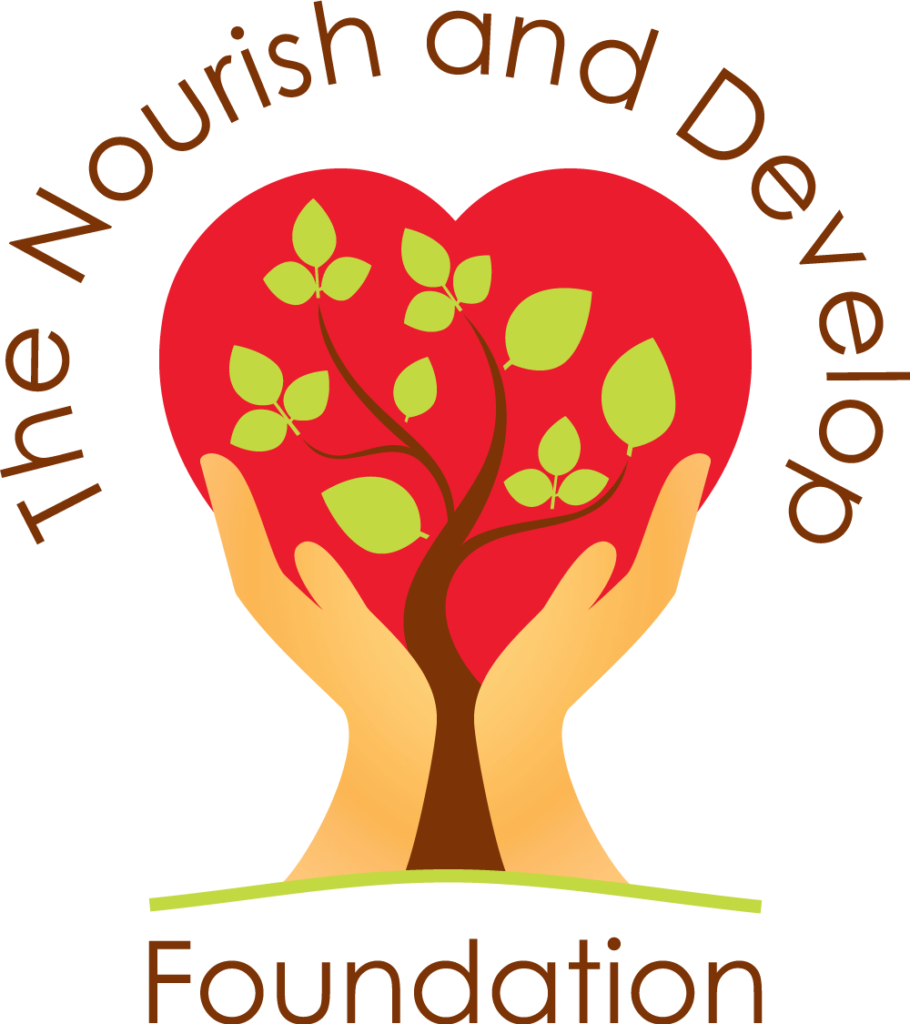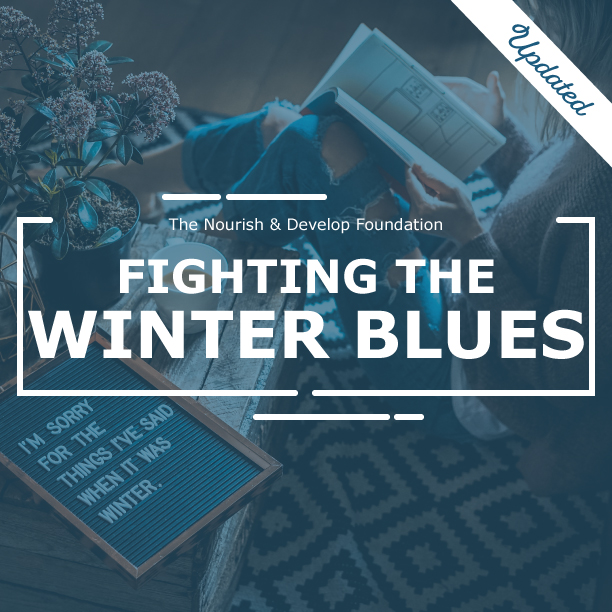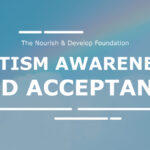And just like that we are in the latter half of October!
Fun holidays like Halloween are approaching (yay!) but being in Canada, we are already experiencing colder weather and shorter days. For some, entering the late fall or early winter can trigger ‘seasonal depression’ which occurs during particular months (summer or winter) beginning and ending around the same time each year. In the winter specifically, reduced sunlight can disrupt our circadian rhythms, overproduce our melatonin levels, and prevent the release of serotonin (the neurotransmitter responsible for regulating our mood among other functions). As a result, we may crave foods high in simple carbohydrates, sleep longer, and withdraw socially in favour of staying in.
When low emotions and lethargy develop into a lasting depressive state, affecting your thoughts, feelings, and interfering with your daily activities, you could be experiencing Seasonal Affective Disorder (SAD) – a clinically recognized mood disorder. Today we will discuss how seasonal changes influence our emotions and behaviours and how we can manage this over the coming months.
DID YOU KNOW? Seasonal Affective Disorder makes up 10% of all depression cases
Clocks roll back at 2:00AM on NOVEMBER 7, 2021
This occurs each year: beginning the second Sunday in March and ending the first Sunday in November. We fast forward an hour in March and are held back an hour in November (this year it will be November 7). There is dispute over the initial reasoning for implementing this bi-annual time change, but most sources indicate that the initiative was intended to help conserve energy due to maximizing sunlight, though the effects of this claim have not been scientifically proven. Unfortunately, turning our clocks back is met with more disadvantages than benefits.
Daylight Savings Time impacts both our physical health and mental health. From almost immediately after gaining an extra hour for up to the first three weeks following, people can experience:
- Reduction in sleep
- Disruption to our internal clocks
- Rise in strokes
With additional increases in heart attacks, vehicular accidents, and workplace injuries when we lose an hour of sleep in the spring. However, one thing that makes a significant difference during the end of Daylight Savings Time in the fall is the surge in depression rates.
DID YOU KNOW? 18% of Canadians will experience some form of the winter blues in their lifetime.
- Get exposed to natural light: get outside when the sun is out by breaking up chores throughout the day (checking the mail, raking leaves, shoveling, walking the dog, etc.) and if not, be sure to sit or do your work by windows if possible, it may involve rearranging furniture to let in more sunlight.
- Amp up the artificial light: light therapy is effective in up to 85% cases, but you can also invest in lamps that are specifically made to help with SAD. Some are pricey, but many are affordable through sources such as Amazon. What to look for in a SAD light here: https://www.healthline.com/health/sad-lamp
- Select specific scents: aromatherapy can help boost our moods through diffusing essential oils or using them in rollers. Bergmot, peppermint, lemon, lavender, and cedar are known to be uplifting
- Talk to your doctor: regarding medication and therapy. Antidepressants in the form of Selective Serotonin Reuptake Inhibitors have been shown to improve SAD symptoms, as well as Cognitive Behavioural Therapy. A doctor can rule out symptoms caused by physical issues (hormonal imbalances, illness, nutrient deficiencies, etc.) and connect you to providers of therapy services (including light therapy).
- Stay physically active: exercising for at least 30 minutes each day can keep your physical health in shape and improve your mood, as it aids in releasing serotonin and endorphins. Rhythmic exercises that involve moving both arms and legs like walking and dancing are best.
Seasonal Affective Disorder (SAD) is a type of Major Depressive Disorder with Seasonal Pattern. The mood changes and symptoms associated with SAD are similar to those of depression but will subside when the season is over (typically spring for winter SAD, fall for summer sad). Around 2-3% of the Canadian population experience SAD, which may be associated with factors including genetic predispositions (the risk is higher when family members have the condition), stress, and when another mental illness is present such as bipolar disorder or clinical depression. In order to be formally diagnosed, the following signs and symptoms must be present for at least 2 consecutive years in a row during the season you are affected by:
- Feeling sad or having a depressed mood most of the day almost every day
- Loss of interest in activities you previously enjoyed
- Having low energy and feeling fatigued
- Disruption in sleep
- Irritability
- Difficulty thinking, concentrating, and making decisions
- Withdrawing from family and friends
- Changes in appetite and or/weight
- Feeling hopeless, worthless, or guilty
- Thoughts of death or suicide
Winter SAD can be characterized by:
- Oversleeping
- Very low energy
- Weight gain
- Feeling like ‘hibernating’
Summer SAD can be characterized by:
- Insomnia
- Agitation and anxiety
- Weight loss
- Episodes of violent or aggressive behaviour
Not all people with SAD experience symptoms every year so reach out for help if it is causing you distress regardless of a formal diagnosis.
DID YOU KNOW? Women are 9 times more likely to be diagnosed with SAD than men.
COPING WITH DARKER DAYS CON’T
- Practice good sleep hygiene: exposure to blue light can interfere with the body’s release of melatonin so try to put electronic devices away before bed, aim for 7-8 hours of sleep each night, and adopt good habits to regulate sleep.
- Be aware of food intake: our diet has a significant influence over our mood so consider supplementing with Vitamin D or source it through foods that have it naturally occurring like salmon, eggs, and fortified yogurts. Foods that are high in Omega-3s are also helpful in improving mood and boost the effectiveness of antidepressants.
- Maintain contact: social connection is essential for our mental health. If physically being with company is challenging, continue to video chat, join a support group, connect on social media, and schedule phone calls if possible, as other people can boost our feelings of well-being.
- Make space for enjoyment: engaging in an activity you enjoy is a core part of self-care. It allows you to be more productive, sparks your passion, and makes you feel good.
- Incorporate relaxation techniques: calming activities that can help you refocus your energy like yoga, meditation, and progressive muscle relaxation can aid in coping with unpleasant emotions and stress management.
The best way out is always through.
Sources:
https://mooddisorders.ca/faq/seasonal-affective-disorder-sad
https://www.healthline.com/health/seasonal-affective-disorder#diagnosis
https://www.helpguide.org/articles/depression/seasonal-affective-disorder-sad.htm



